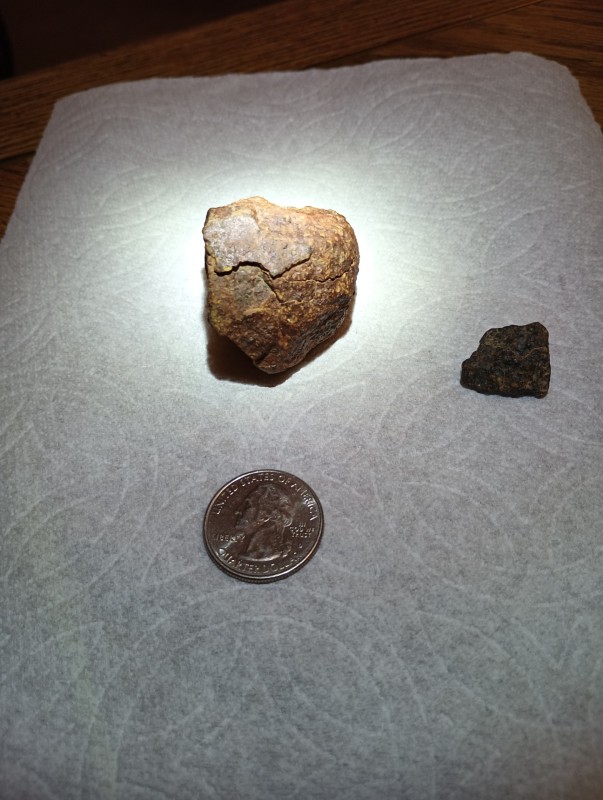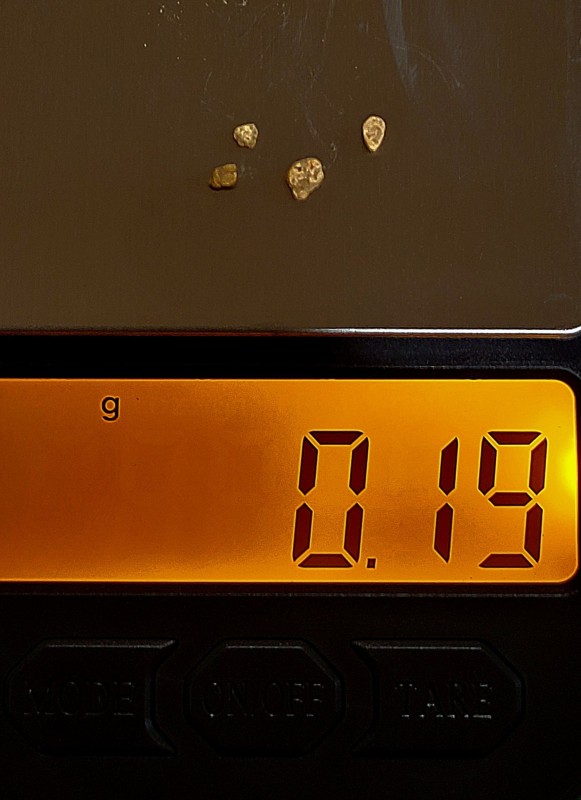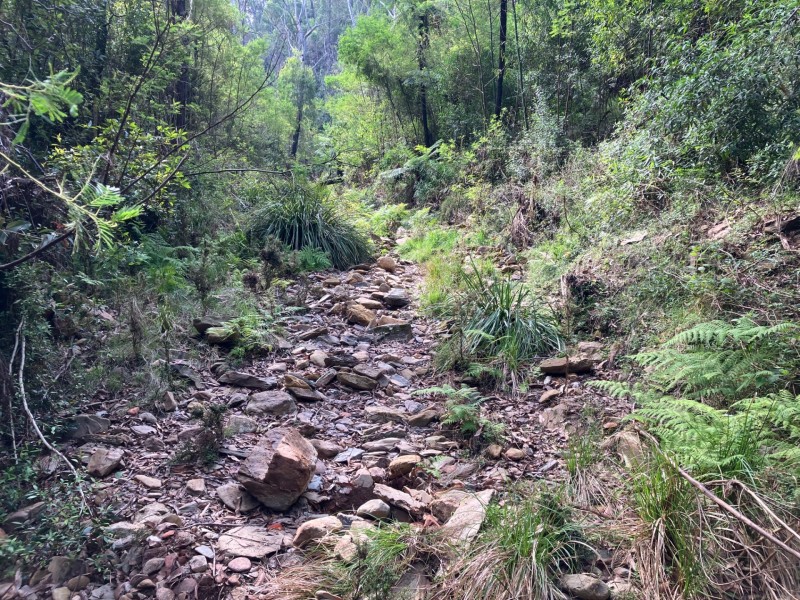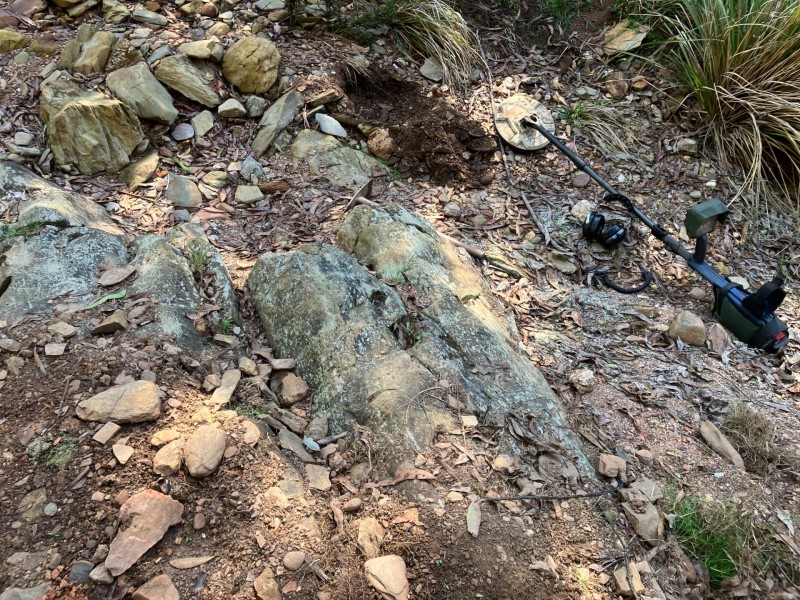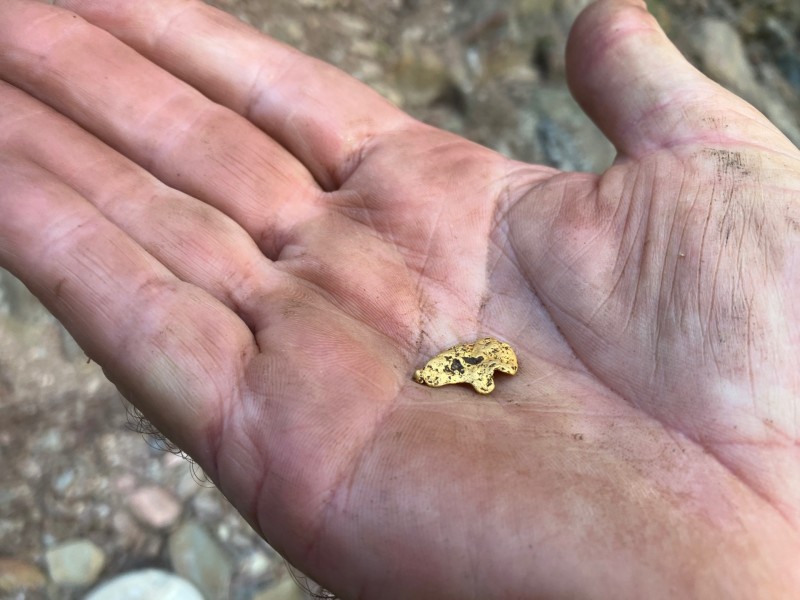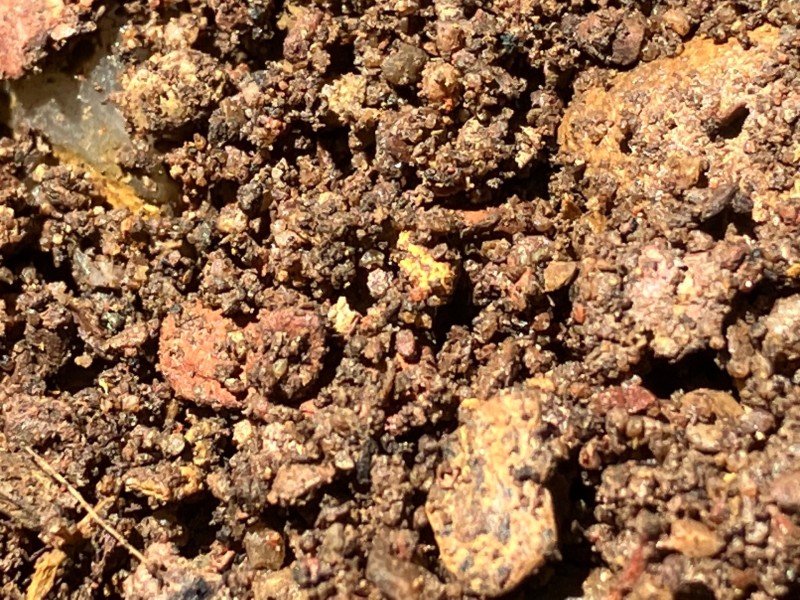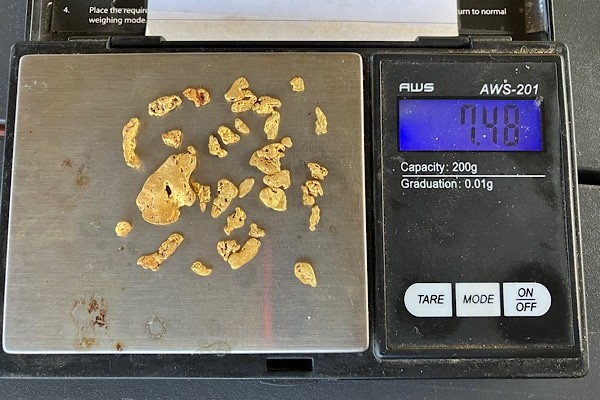Search the Community
Showing results for 'GPZ 7000 ferrite'.
-
Whether the tech is maxed out or not is a matter of perception. Some think another inch will change everything. Others would say another inch is less than 10% more depth over what we have now, so evidence we are maxing out. Whatever. A color screen will not find me more of anything. GPZ 7000 type power with good ferrous/non-ferrous type discrimination is all I need. Right now you have to choose between maximum depth, or good discrimination at shallower depths. The depth difference between a GPZ 7000 and the best VLFs is astounding. Surely somebody will crack that nut someday but I'm not holding my breath for it.
-
A forum friend and I went out to an area that John B said had meteorites and I found a couple. One is 83.4 grams and the other is 4.6 grams. I've found meteorites for years on John B's property, but these were not on it. Thank you, John. As this meteor was coming in it gained a fushion crust from the heat. It broke up into many pieces and you can see cracks in this one. It was down in the redish soil about 4 inches. I was told other larger meteorites were found in the same area. I've washed this one off and you can see the partial fusion crust illuminated by the flashlight. When this one was cleaned I observed some tiny flecks of gold color which I don't remember on other meteorites. I started that thread first but I'm not able to get a fleck on camera. This was found with my 7000/15CC X-Coil. Other magnetic rocks were found in the area but this is a classic meteorite for the area.
-
Using The 7000 To Pick Up The Scraps Missed By The 6000
dig4gold replied to Lesgold's topic in Detector Prospector Forum
That 8" would be the Russian made X coil which needs the adapter to run on the 7000. D4G -
Using The 7000 To Pick Up The Scraps Missed By The 6000
dig4gold replied to Lesgold's topic in Detector Prospector Forum
That was my point. The 7000 is king for depth. The 6000 is deadly on the small shallowish stuff but loses its punch for depth quickly. Going from a banger of a signal to dropping off very quickly. You have to have a very keen ear & be on your game to catch those very faint whispers that are deeper down with the 6000, but they are there. Same old scenario though, one detector doesn't do it all so the 6000 & 7000 complement each other. You are on to it. On another note gold has broken through the NZ$3,700 mark. Actually NZ$3,738 an ounce. Happy days. No wonder Pioneer Pauly has been coming over here making a pig of himself on our gold. He loves the place. D4G -
Well, I had to really work to find them 4 lil bits. And they could have possibly been left by Klunker because he is tired of digging small bits. I really enjoy running the 6000 in hilly areas. It's just plain lighter and you can place the coil in more areas over the course of a day because of that. I'm running the 6000 with a 12x7 NF on the difficult with the lowest possible sensitivity. But in all fairness, I've found super tiny bits with the 7000.
-
Using The 7000 To Pick Up The Scraps Missed By The 6000
klunker replied to Lesgold's topic in Detector Prospector Forum
Sourdough Scott and I played hooky and snuck out detecting between storms. I took him to a place and showed him where I found a few bits once before which was about a 30' x30' knob of bedrock. I went over it one more time with the 7000 and found nothing so I figured I would send Scott there with his 6000, knowing that I had left absolutely nothing. Dang it! The son of a gun found 4 bits that the 7000 missed. I got skunked that day but I'll eventually get over it. So I can't say which detector is the best for final cleanup. -
Using The 7000 To Pick Up The Scraps Missed By The 6000
phrunt replied to Lesgold's topic in Detector Prospector Forum
The 8" coil is my favourite of the smaller coils, being the smallest, more of a specialty coil as you're not going to cover ground with it, but it's ideal in this situation you're in there and I would not be at all surprised if it picked out gold you're currently missing with both combinations. A compromise is the 10" as it gets a more normal ground coverage with just a little less sensitivity which of course means a little less depth on the smallest bits but a bit more depth on bigger bits but even coils like the 15" Concentric are very competitive with the 8" on small gold, only falling slightly behind more similar to the 10" while providing plenty of other benefits and would be my overall pick of coils. If only Minelab made more coils for the 7000, or at least sanctioned other brands to do so to make them more mainstream I think these 6000/7000 comparisons where people favour the 6000 by a large degree on smaller gold would largely disappear. -

Using The 7000 To Pick Up The Scraps Missed By The 6000
Slade replied to Lesgold's topic in Detector Prospector Forum
6000 vs 7000 people are really missing the point here on the settings they are using. If you run a 6000 in difficult, wiggly lines, however you want to call it. You can miss gold at a certain size and depth. That same nugget two inches deeper and the 6000 will get it. The 7000 in difficult has less of a problem with this phenomenon, although it is still present. I have good evidence to back this up. Look at the last minute or so from this video and it will prove it. this video is testing the algoforce but just by chance I witnessed this exact situation when running the 6000 over the test nuggets. -
Using The 7000 To Pick Up The Scraps Missed By The 6000
phrunt replied to Lesgold's topic in Detector Prospector Forum
This is largely an illusion caused by the lack of coil options. Yes, there is likely some pieces a 7000 will miss the 6000 won't and also vice versa but the number isn't near what it appears to be, I think. The 7000 has a well-known depth advantage as the gold gets bigger though. Sounds like a spot to hit with a VLF if it can handle the soil, as a VLF truly does pick up smaller bits the 6000 and 7000 can't see at all. There is no one detector that excels at it all, largely due to design choices by the manufacturer to sell more detectors. And Dig4gold has a point there, now more than ever I'm flipping rocks to get results, it pays off. -
Using The 7000 To Pick Up The Scraps Missed By The 6000
Lesgold replied to Lesgold's topic in Detector Prospector Forum
That’s a valid point. Nearly all of the targets would have been easily recovered using the 6. The point is, this area was detected well with the 6000 on previous trips with no targets being heard. The 7000 picked up 3 signals in close proximity to each other and were recovered from good depth. This resulted in rocks being moved and gravel shifted in order to cover the ground well. What you saw in the clip was a result of that activity. If we didn’t take the Zed with us on this trip, the gold would still be in the ground. I’m not putting down the 6000, (it is actually our go to machine) I was just pointing out what happened and how the 7000 really does sniff stuff out that the 6 can’t hear. The two machines are a fantastic combination. The small patch area was detected really well with the Zed until I was satisfied that there was nothing else to be found. The problem I did face was the machine was trying to tell me something but no matter what I did, it could not give me enough information and lock onto a target. As this was a flood gold deposit, I assume that there will still be some small pieces present and possibly some pan size specs. With Easter coming up, and family visiting, the plan is to head back with my daughter and grandson to have one more play at the patch. This time the 6000 and a pan will be used. It is amazing how the 6 can absolutely scream on a small piece and yet the 7000 won’t even hear it. Im hoping they can have some fun and share in the thrill of holding some pieces of gold. I’ll report back if the 6 does find anything. -
Using The 7000 To Pick Up The Scraps Missed By The 6000
dig4gold replied to Lesgold's topic in Detector Prospector Forum
In all fairness the pick is a large target for the GPZ 7000 & as we know the 7000 is king when it comes to larger targets at depth. He also had moved that rock that he got the signal from with the 7000. Had he moved the rock & then waved the 6000 over it I am sure he would have got that signal with it. So did he really get a scrap the 6000 missed? He didn't give it a chance & should have waved the 6000 over it after moving the rock so I am not a believer. He also should have waved the 6000 over the ground he had cleared for the 7000, maybe he did but he didn't say, but most likely waved the 7000 over it & only got that signal he showed after moving that rock. I would definitely believe he could have got a bigger bit of gold at depth with the 7000 that the 6000 wouldn't have got. How many of you have got gold from moving a rock/rocks no matter what detector you are using? All of you I bet. D4G -
That’s some really nice gold, thanks for sharing! More people in the U.S. are cleaning up small gold missed by the 7000 with the 6000 than the other way around, so your video makes for an interesting counter perspective. In general if you hunt ground that was well hunted with with a GPZ 7000 by following up with a 6000 you will find smaller bits the 7000 missed. Conversely, in deeper ground, following a 6000 with a 7000 is likely to find larger deeper gold the 6000 missed. It can work both ways.
-
My detecting mate and I have been working a dry gully for quite a while using our 6000’s with 10x5 Coiltek coils attached. We had been finding a bit of small gold but lately our returns diminished and we had almost decided to move to a new location. In a bid to squeeze out a few more pieces, we decided to detect the ground with our 7000’s and try to uncover a few deeper nuggets. We weren’t expecting much as we had spent a considerable amount of time working this area on the short gully and thought that if we could come home with a piece or two we would have achieved our goal. The Six with the small coil really suited this area as there were many potential gold traps and hiding spots for the tiny pieces that inhabited this location. The Zed’s were fitted with Nuggetfinder 12” Z search coils and after a ground balance and tune were running exceptionally well. The hot rocks and noisy ground that played havoc at times with the 6, were ignored by the 7’s so we knew that we had a bit of potential to find that really subtle signal. We moved slowly and tried to get into difficult areas and hopefully jag something for our effort. After about 20 minutes we added a couple of small pieces to the rattle jar from steep banks on the sides of the gully. It was agreed that the shallow pieces would have been picked up easily with the 6000 but were now happy that we hadn’t been “skunked” for the day. Joe was working a stretch of ground that had produced well for us in the past so I decided to move upstream about 50m to give him some space. I started at a rock bar that had given up some treasure about a month or so ago. We had pulled about 6 very small pieces on and around the outcrop and made a concerted effort to cover all the ground in that area very well. Every subsequent trip resulted in a repeat of that process just in case we missed something. The same region was detected today with the Zed and to my surprise, a very faint signal was heard. It was in an ideal location next to the rock bar on the inside section of a bend. You can see the hole in the photo. We had hoped to find a piece of gold at a depth that the Six couldn’t see and it finally happened. It must have been on edge as the signal was initially very soft and only increased during the dig. What popped out was a pleasant surprise. The 6000 has dominated our detecting for a couple of years now and the Zed barely gets pulled out of the cupboard. It was good to get its coil scraping on the ground again and put through its paces. We had forgotten how quiet it could be when the ground suited. We had also forgotten about digging deep holes until we were quickly reminded of its power. Rusty nails and bits of steel with soft enticing signals generally resulted in ugly growls and swimming pools being dug half way to China. We moved upstream and continued to detect some old ground looking for that deeper target. I was lucky enough to get a really faint signal behind a large rock. After digging a deep hole, a small, shiny nugget surfaced. I could see why the Six would not see a piece of gold at that depth. When the hole was inspected with the coil, another break in the threshold told the story of a surprise awaiting inspection. When a piece of gold ended up in the scoop, I called Joe over and we started moving rocks and detecting a small area thoroughly. A bunch of small pieces resulted. We had a lot of fun working that area together. Joe finally moved 20 metres upstream and found another patch of deep, small pieces of gold. The river worn gold was often visible in the scoop or in the ground like the piece shown in the picture. Joe pulled a couple of pieces on the walk back including one that was in a pool of water. Boots and socks came off and a slow and frustrating recovery followed. It’s great to see a prize for all the effort put in. The final picture shows the result of our day out. Quite a few of the pieces were so small that they wouldn’t move the scales but they all added up. It is pleasing that the Zed can still earn its keep on the tiny gold. Most of the pieces found would still be in the ground if we had used the 6000’s on this trip. Having a combination of machines has proved to be a winner in this area.
-
I don't think that it's a problem in this case. A magnet moving relative to the ferrite rod antenna would definitely be a question mark though. ??
-
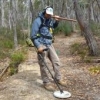
Some Things To Take Note Of With The Algoforce
PhaseTech replied to phrunt's topic in AlgoForce Metal Detectors
When swinging, I find my hand feels more natural when it's resting on the bottom of the handle. That gives me about an inch and a bit of clearance to the bottom of the control box. I'll probably still put a thin layer of tennis racquet grip tape as I did the same with the 7000 and 2300. Probably got so used to the foam grips from the SD days right up to the 5000. -
I'm really hoping the sales on the 6000 and 7000 is early indication they are clearing stock for new flagship gold models and not just axing the EQ600 and backdoor fixing the 6000 coil issues. And I hope we get surprised and it's not a GPZ8000 but something new entirely. H1 or something. Hybrid PI/Z, I know that's all buzzwordy, but I want to see something truly new after this long of a wait.
-
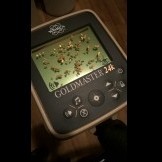
Have Detector Companies Hit A Wall
Aureous replied to RONS DETECTORS MINELAB's topic in Detector Prospector Forum
I think Steve hit the nail right on the head.... aside from the 'Detector tech hitting the wall' question, Minelab, as the world leaders in detector technology, are slowly failing....even if they dont see it. Competition is here with much more to come. The GPZ7000 replacement has been sitting on the bench for a couple years now and without the actual 'hitting the ball outta the park' analogy coming true, then all the small, incremental improvements aint gonna be enough to sway the serious purchaser into ditching their Legacy GPX, 6000 or 7000 machines. As Minelab's own motto goes 'Performance is Everything' and this actual, serious performance increase will be the ONLY thing that keeps ML at the top of the heap. Not only do the serious guys buy a lot of detectors, but their in-field results drive sales. Nothing sells like success.... -
Where Are All The In-field Reviews Of The E1500???
phrunt replied to Aureous's topic in AlgoForce Metal Detectors
I rounded off the small change on all the numbers ? Batteries can be had for as little as $30 so that's insignificant too and you can use it for other purposes outside of detecting like charging your phone so it's' a multipurpose investment, not specific to the detector, and in my case at least I didn't need to buy coils, although adding a coil like the Sadie on isn't going to break the bank and I couldn't resist buying one for the Algo, I just hope Sadie supply can keep up with demand for those wanting one as it's a pretty good coil on it, although the spirals are more sensitive and I'd only use the Sadie for the size. Not sure how that translates to people in bad ground, they may prefer the less sensitive Sadie over a Spiral? It's within the price range it can be purchased for a bit of fun, VLF pricing really. I bought one for that reason, it's not like I needed it although the more I use it the more I see its potential for purposes outside of gold prospecting. I also think of the 7000 as the everyday machine (Not that I use it every day, or even close) and the 6000 the take out when I feel like it or need the lighter machine, I just yesterday took the 6000 as it shrinks down small for a backpack hike, I'm sitting here now with jelly legs and can barely walk from the big mountain hike yesterday, picked 3 little bits with the 6000 and 12x7" NF though so for me at least that's some success. -

Have Detector Companies Hit A Wall
jasong replied to RONS DETECTORS MINELAB's topic in Detector Prospector Forum
Gold detectors already do this to some degree. They look at both X (ferrous) and C (conductive) components of a signal as separate entities. The problem is that gold nuggets are in that unfortunate zone of overlap between X and C I think so they have both components and eliminating or reducing one could affect nugget signal. But as with everything - there are places where this is a bigger problem than other places, and more detector control would allow an experienced operator to change settings and adapt. I think it's possible right now actually. To some degree, I think this may be an end goal of Geosense, but I'm unsure. Maybe that was an application of the patent? The 6000 is more advanced than you give it credit for Simon, and I'm saying this as one of it's biggest critics. I'm guessing it's because you tend to hunt the same places and stick within small, defined areas. Most of the positives I've found relate to using it as an exploration machine. The 6000 blows away the 7000 in conductive ground (salt), even with a 10" X Coil on the GPZ. Yet, it retains the sensitivity of the GPZ with the 10". I can explore salty ground 4x faster with the 6000 than I can with the GPZ due to both it's performance in salt as well as the weight reduction. It's far more sensitive than a 5000 with an 11" round too. Also, I'm not ready to sell Geosense short or underestimate it just yet. I have documented well my issues with what I perceive it to be doing and how it can negatively affect a detectorist without them even realizing it, but I also still use Auto+ almost entirely, it's just too convenient when covering tons of different grounds types while exploring. When in variable ground, it does well adapting and letting me concentrate on other things besides fiddling with settings - it saves tons of time for me and I expect the next iteration will be better. This stuff here is why I said earlier they really need to get exploration prospectors on the testing crew. Because that's exactly the strength of the machines like the 6000 and they need to start getting input from people that can point out things that I feel a lot of current tests may underestimate if not miss entirely. -
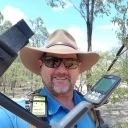
Where Are All The In-field Reviews Of The E1500???
Jonathan Porter replied to Aureous's topic in AlgoForce Metal Detectors
It’s not $2000, it’s $2300 plus a battery plus a coil etc. I’m still waiting on mine, I’ll buy one because I’m a metal detector tragic and they’re cheap enough for a bit of play. I just couldn't justify an Axiom in Australian dollars!! From my Algo expectations perspective, I’m already in the boat described above because I view my GPX 6000 in the same light compared to the 7000 which is my everyday machine. I only put the 6000 on when I want to muck around and have some fun, so with the Algo when I get it I’ll just be targeting ground where a very early sampling PI has an advantage, they don’t have smooth so why go into nasty variable high X ground? ? I have numbers of locations ideal for a nice little light weight thing-a-me-bob like this and I look forward to pinging a few tiny bits in low mineral ground that gives all the VLFs conniption's due to the MANY MANY hot rocks driving you ka-boing ka-boing nuts. ? JP -
Where Are All The In-field Reviews Of The E1500???
phrunt replied to Aureous's topic in AlgoForce Metal Detectors
I don't know why anyone is expecting a $2000 detector to do better than a $9000 and $10,000 detector and pull stuff out of flogged patches with them. It might find the odd bit but it's not going to be a game changer in that scenario. The Target ID may help in the trashier areas to come out with something too. The idea I think behind the E1500 is to bring a very cheap detector to market for people that don't want to pay the high pricing of those detectors yet still have a rather large percentage of the performance of them on the bread-and-butter smaller gold most people are finding. If your idea of buying it is because you want it to do better than your GPZ or GPX 6000, you're wasting your money. They're already beyond the first batch too, I've got a second one being shipped to me at the moment from another batch for a friend that lives in a country they can't ship too, he's picking it up in NZ on his holiday here in a few weeks. I think it's a fantastic detector and has great coin, jewellery and beach appeal which I can't say that about the 6000 or 7000, so it offers something there too, but it's not going to destroy the 7000 or 6000 on old patches, although if the 7000's using the stock coil or NF 12" I'd give the E1500 the edge on some smaller gold. -

Have Detector Companies Hit A Wall
jasong replied to RONS DETECTORS MINELAB's topic in Detector Prospector Forum
If they are coming out with new detectors, I feel they need to be actually new at this stage. Like the 7000 was. It was a new paradigm. Adding a few controls and tweaks to an old machine doesn't do much for me anymore personally. If it's fractional improvements on old ideas, I'll just wait for a new Algoforce or Nokta or whatever at 1/4 the price, no hurry. Stop milking the same cow already, Minelab. The 7000 and 6000 seemed steps in the right direction finally, I hope they don't go backwards with something like a revamped 5000. Design for exploration prospecting in addition to sensitivity, and get some of exploration prospectors on the testing crews so the engineers have an ear towards the types of concepts that are import there too. If they revamp anything, it should be the 6000 and 7000, not the 5000 IMO. And even a revamped 7000 at this stage would be a letdown to me as I think a new redesign and model would be better in almost every way. The concept of putting X old detector in Y new updated package has no appeal to me anymore for any model, unless it's done fairly quickly after release - like 2 years. That's just me though. Tech moves too fast now, times have changed. -
Have Detector Companies Hit A Wall
phrunt replied to RONS DETECTORS MINELAB's topic in Detector Prospector Forum
The 6000 with more control would be nice, I wouldn't buy it as I've already bought a 6000 and it's a significant investment already so just having more control wouldn't be worth the money to me as much as I'd like it, still think that's how the 6000 should have been but I understand the logic behind making it simple for African prospectors who just don't care and just want to find gold and quickly before someone else does to put food on the table. The 7000 lightened up and with a concentric col I already have, by using lighter alternative coils. No way in the world would I pay another 10 grand for that even if it was Gold Monster weight or less. The 5000 pro is the most appealing out of the list there, although my 5000's already on a full carbon shaft, has a light weight battery, has an SP01, the thing it lacks is the small gold/specimen benefits. I'd rather the 5000 Pro have a screen for settings rather than another box, so modern miniaturized electronics would be nice. I don't get in the water enough if at all to need the Sovereign, but I think that would probably be a popular unit as water hunters are the most neglected group of detectorists by the looks of it. Long story short, I wouldn't buy any of the above detectors, no doubt plenty of people would though, especially ones in good gold areas. -

Have Detector Companies Hit A Wall
PhaseTech replied to RONS DETECTORS MINELAB's topic in Detector Prospector Forum
Here's a few things on my Minelab dream list: A 6000 with a lot more control - independent threshold, tone control, front end gain adjust, more timings etc. A 7000 that's gone on a diet - don't need the GPS, and a nice mid size semi-elliptical concentric would be great. A gpx5000 Pro version - full carbon shafts, SD series khaki green box, a small internal battery to give me 6 hrs run time, but still able to hook up the external battery pack. External manual tune pot like the 3500. No coil supplied. And a little bit of SDC/6000 timing magic for an improvement on specimens. Actually, if they did this, I probably wouldn't need the first two ☺️ Heck they can even stuff my sP01 circuit inside if we're really dreaming. A Sovereign type machine that's fully waterproof, i.e. a Garrett infinium style control box that I can chest mount. Aqua Sovereign or Excalibur III? None of the above is using new technology, so quite achievable, and would sure get me wanting to upgrade. -
A new model is going to have to do a lot more than be lighter with some minor benefits, if it doesn't all it will do is drive up the sales of aftermarket coils for those who have waited out buying them in hope a new model comes out that's significantly better. I just don't see a new GPZ coming anytime soon. I'd love to be wrong, but I doubt I am. It will either be good and I'd want to own one, although I doubt,I'll be buying it as it will be another very overpriced detector for someone in my position with little gold to be found or it will be not as good as many hope and drive-up sales of aftermarket coils for the 7000. The 6000 already increased the sales of GPZ aftermarket coils, a new 7000 is going to do the same. People think do I invest another 10+ grand (Australian) on a new detector for some better performance, or a couple of grand (Australian) on my existing one and it also gets better performance for a lot less money, how close it is to the new detector is what we will have to wait and see, they may just wait until the 6000 and 7000's are all old in another 5 or 6 years and release it then, that way it's just a new model not needing to be that much better performing as people are looking to replace older detectors with problems anyway, and it can have all the modern lightweight features and whatever Bluetooth is around at the time, and better screens, batteries and whatever else other industries invent to improve the product.





